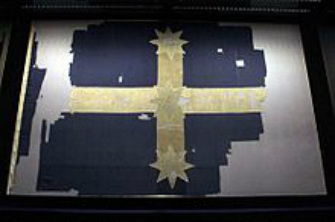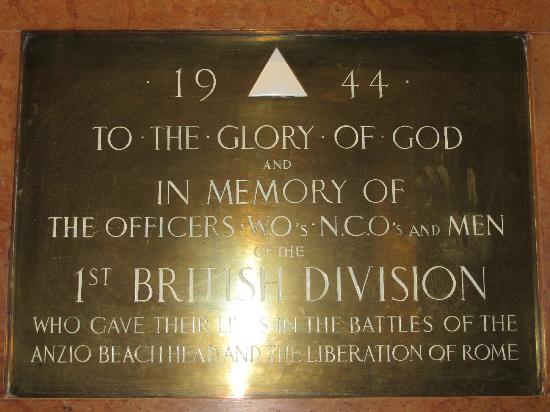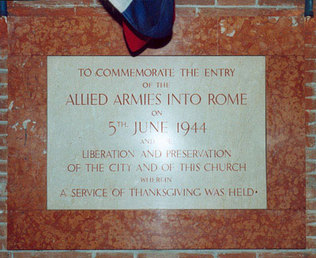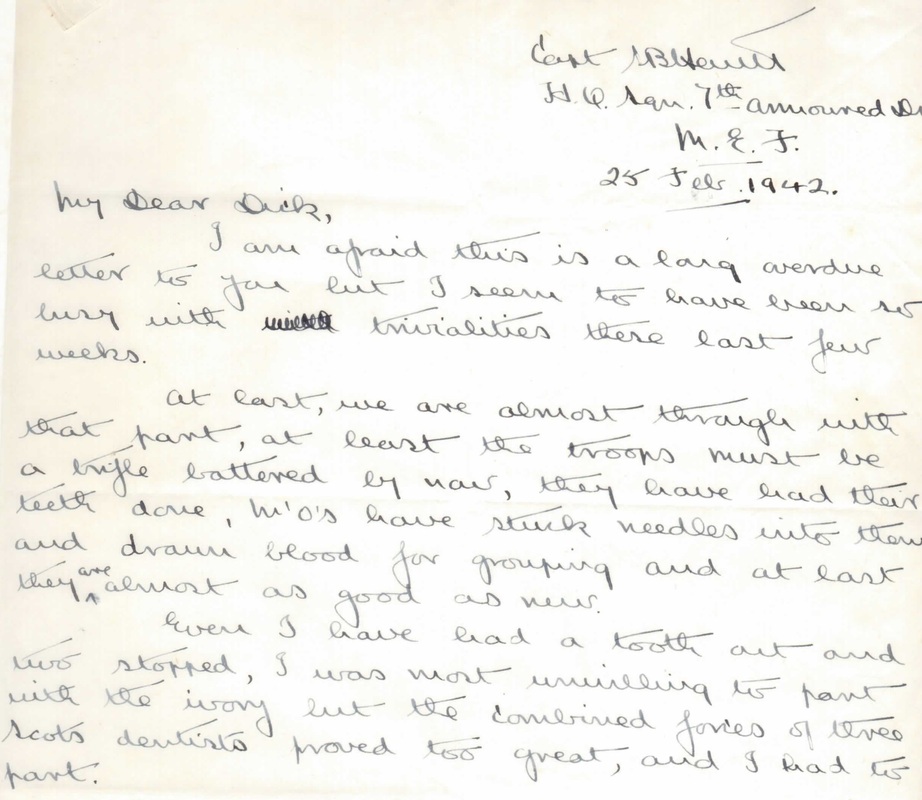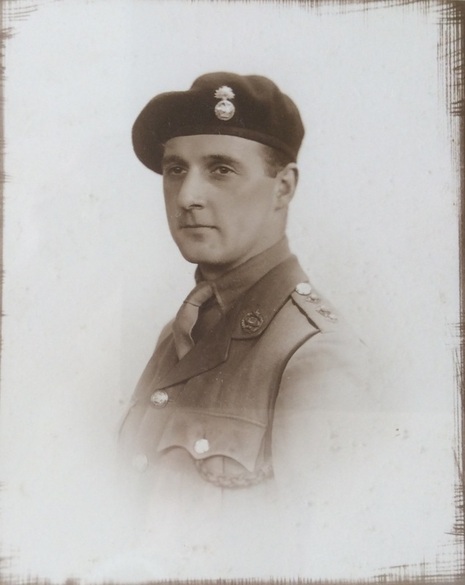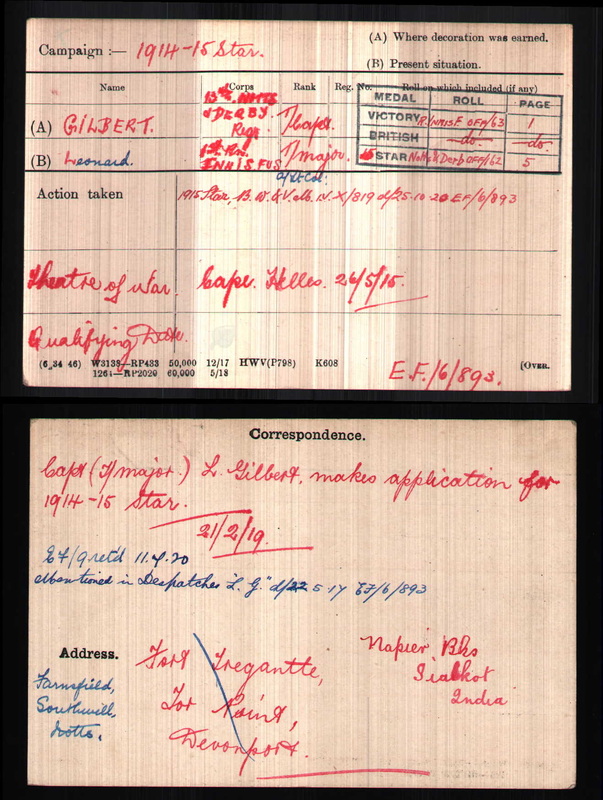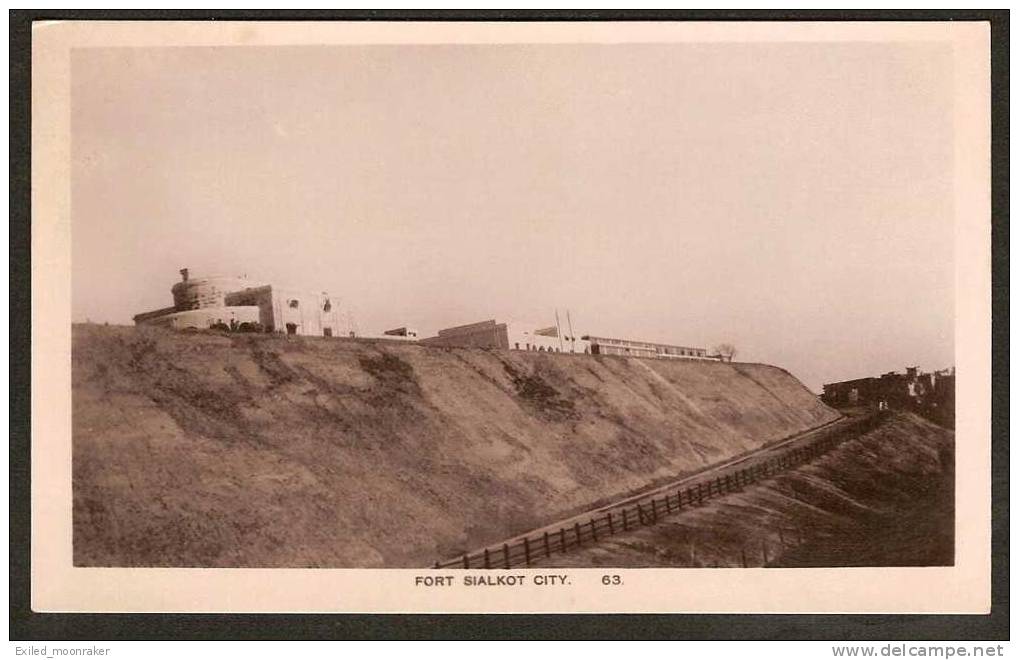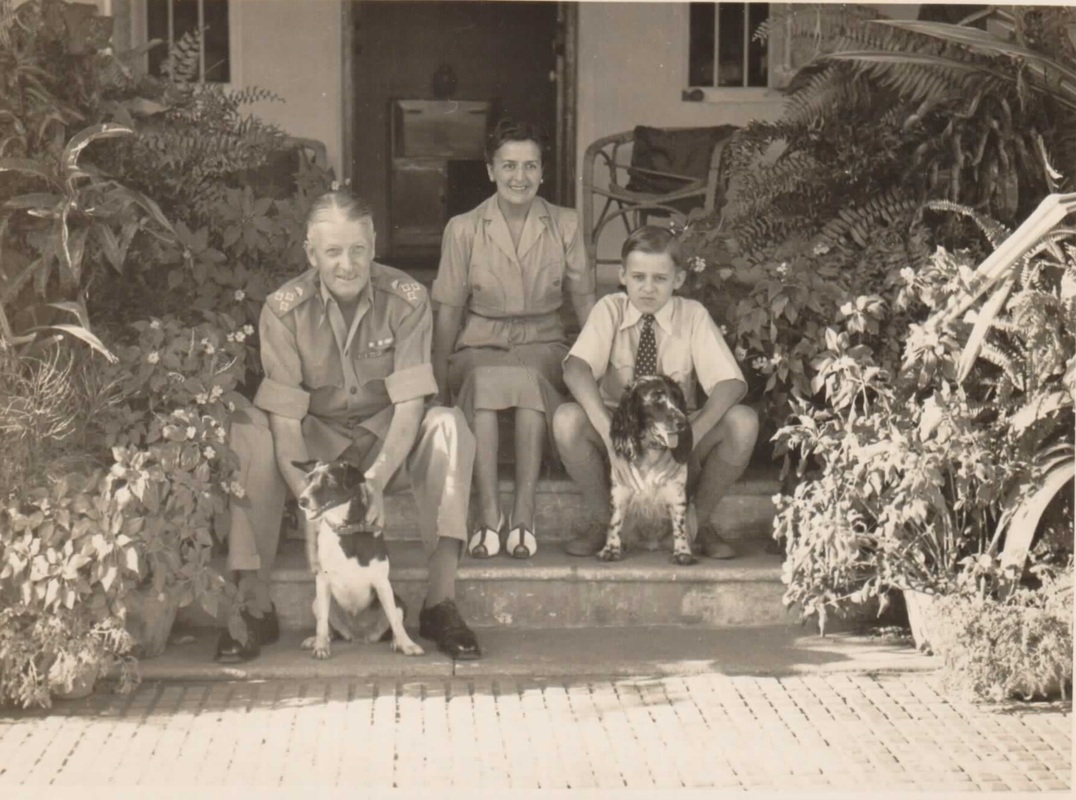IntroductionThe indomitable spirit of the Borderer is well known. Descendants from many Border families were brave, enterprising and natural born leaders in their field, whether military, agricultural, or just plain old fashioned pioneers. In this months post I shall introduce you to just one branch of a family we have met previously on more than one occasion, most notably in the tragedy of the wreck of the "Royal Charter" in October 1859 off the coast of Anglesey, on a return voyage from the gold fields of Melbourne, Australia. I am talking of course about the Hogarths. In particular the post focuses on the descendants of Agnes Stewart, maternal cousin to Robert Hogarth of potato fame, remember him? If not I will post a link at the end so you can refresh your memories. Robert's father George Hogarth died at Lennelhill in 1791 and it was George's sister Margaret through her marriage to Alexander Stewart/Stuart in 1835 who was the mother of Agnes and her descendants who are the subject of this months offering. Circa 1855 Agnes Stewart married James Thomson. Together they would be the foundation of a farming dynasty throughout Berwickshire and North Northumberland. Their daughter Margaret married Patrick Johnston tenant farmer of Simprim and their daughter Jean married Matthew Trotter of Rothill, Whittingham Vale, Northumberland. Their son James married Patricia Grieve but that is another story entirely! James Johnston son of Margaret Thomson and Patrick Johnston married his first cousin Matthew Jane Trotter daughter of Jean Thomson and Matthew Trotter of Rothill in 1821. Margaret and Jean Thomson were sisters Lt Col James Johnston KTS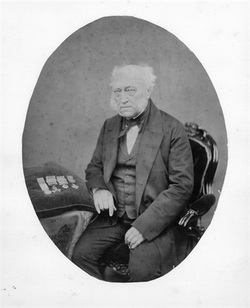 Lt Col. James Johnston KTS 1788-1861 Lt Col. James Johnston KTS 1788-1861 James Johnston was baptised at Swinton on 26th December 1788 to parents Patrick Johnston and Margaret Thomson, tenant farmers in Little Swinton and Simprim. On 21st May 1821 he married his maternal first cousin Matthew Jane Trotter at Duns Manse. He is described in his marriage announcement as "Lt Col in the Portuguese Service and Major in the British Service". In 1829 James was promoted to Lt Col in the 99th Regiment (Lanarkshire Regiment) of Foot. The couple spent the early years of their marriage overseas with at least four of their 9 children born in Mauritius where James was head of the British Military Force. They had returned to Edinburgh by 1838, and had taken up residence in Mount Lodge, Portobello, where in September of the same year James was made a "Knight of the Tower and Sword", a Portuguese military honour in recognition of his outstanding service during the Peninsular War. This was but one of the many decorations he received throughout his military career. (Hold this thought readers...) He was also Provost for Duddingston and Portobello for eleven years prior to his retirement in 1860. He did much to improve the water supply and drainage for the town but not before his wife and cousin died in April 1850, of typhus, tragically contracted from water in the well in the grounds of Mount Lodge, their youngest son was but nine years old. James outlived his wife by a further eleven years, passing away at their home on 12th November 1861. He was survived by 3 sons and one daughter. All his sons followed in their fathers military footsteps. The eldest, Patrick was by this time a Lt Col in the 99th Regiment of Foot in his own right, third son George a Lieut in the Royal Marines, but it was to be his second son James born in Mauritius in 1826 after a stint of 10 years and a Lieutenant with the 39th Dorsetshire Regiment who would play a pivotal role in the events that led to the establishment of Australian democracy on the gold fields of Victoria at Ballarat. (A touching footnote from a close descendent of Lt Col James Johnston "his Regimental Dress Sword and Scabbard have recently been re-united, the first time since 1861") Ballarat a City Built on GoldBallarat or "Balla arat" the aboriginal for "resting place" was a sparsely populated sheep station founded in 1837 by Scotsman Archibald Yuille. It wasn't until gold was discovered in 1851 ironically at a place called "Poverty Point" that the worlds attention focused on this rural area of Victoria and the "Eureka" goldfields. Mass global immigration followed and within months the area's population had grown to approximately 20,000 migrants, scattered in tented shanty towns around the area's hills and creeks. 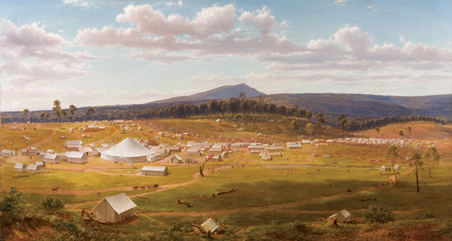 Tented City of Ballarat in 1853-1854 Tented City of Ballarat in 1853-1854 The sustained high gold yields meant a further influx of migrants seeking their fortunes and it is estimated that at its height in 1858 these numbered in the region of 60,000. Ballarat would be transformed, by 1957 botanical gardens had opened to the public and the period from the 1860's to the early 20th century saw impressive buildings and structures built on the wealth from gold mining. The massive influx of people of all nationalities required governance and regulation. To this end Gold Commissioners were appointed to issue licences, and the police commission and colonial forces to mange civil order. Given the diversity and number of people that made up the migrant population trouble was inevitable . The defining moment came on 3rd December 1854. The event became known as the "Eureka Stockade" James Johnston jnr, Assistant Gold Commissioner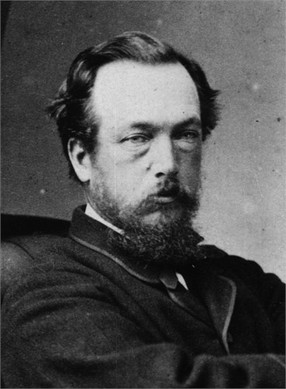 James Johnston 1826 - 1885 James Johnston 1826 - 1885 Our intrepid adventurer James Johnston junior son of the Lt Col, left Scotland in 1852, bound for the gold fields of Victoria. In November 1853 he was appointed to the post of Assistant Gold Commissioner with an annual salary of £400. His financial position seemingly secured he sent for his fiance Margaret Brown Howden to join him. Margaret was born in Duns in 1831, the daughter of Francis Howden and Sophia Brown. Francis Howden was the son of Isabella Grieve the sister of Patricia Grieve who married James Thomson (see above), so James and Margaret were in fact, related by marriage. Margaret set sail on the "Hurricane" in May 1854 arriving in Melbourne on the 2 August. She married her sweetheart just seven days later. By the beginning of September they had arrived at the English Government compound known as Camp Hill, situated on an Escarpment overlooking the tented shanty towns of Ballarat. Tension was building, the miners were objecting to the rising cost and random inspection of their licences. Then one of their number was murdered, a Scotsman by the name of James Scobie! Inquest & Trouble FlaresJames Scobie was murdered on the 7th October 1854 outside the Eureka Hotel following a late night/early morning drunken brawl. An inquest into his death was held the same afternoon. James Bentley owner of the hotel, his wife Catherine and other members of staff were chief suspects. The case was adjourned due to lack of evidence. The miners were unsatisfied with the outcome and brought pressure to bear on the authorities. A full judicial enquiry was held on the 12th October over which Gold Fields Commissioner Robert Rede, Police Magistrate John Dewes, and Assistant Gold Commissioner James Johnston presided. Police Magistrate John Dewes was well known amongst the mining community for his shady dealings with hotel proprietor James Bentley. During the period of adjournment a 10 minute conversation was observed between the pair. When the hearing reconvened and the case was dismissed by Rede and Dewes, Johnston was not happy, and neither were the miners. They had expected a unanimous verdict of guilty. 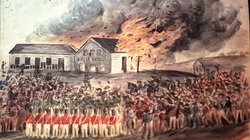 Outraged by the outcome the miners planned a further meeting to be held on the 17th October outside the "Eureka Hotel" to petition for a full criminal investigation. A riot ensued, the hotel was burned to the ground and Bentley and his crew fled for their lives. The miners got their wish and when Bentley was apprehended a full blown trial at Melbourne's Supreme Court commenced on the 18th November. On the 20th, Bentley and two others were finally found guilty of manslaughter. With no confidence in the authorities to mete out justice and the draconian measures imposed by the Gold Commissioners with regard to licence inspections the Ballarat Reform League was formed on 11th November. Their resolution based on the Chartist principles of the day stated "that it is the inalienable right of every citizen to have a voice in making the laws he is called on to obey, that taxation without representation is tyranny". Whilst the League sought to negotiate with Gold Commissioner Rede, he had other ideas. Rather than listen to the miners, Rede merely increased the police presence and brought in reinforcements from Melbourne.
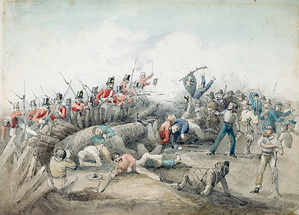 The Eureka Stockade The Eureka Stockade There was now a strong military presence in the form of the British Army from the military garrison in Victoria and at 3.00 am on the morning of Sunday the 3rd December the troops advanced on the makeshift stockade and battle commenced. Poorly armed and lacking ammunition the miners were soon overwhelmed, leaving at least 22 dead and 34 wounded. Following the fighting, 120 men were detained of which 13 were tried in February 1855 for High Treason, all were acquitted to great public acclaim. Commissioner Rede was hastily removed to an insignificant post in rural Victoria! The democratic actions by the authorities following the revolt is hailed by many as the birth of Australian democracy and as such the Southern Cross or Eureka flag attained national symbolism - a topic that is still hotly debated. The fact however remains that the battle that became known as the "Eureka Stockade" is the only armed rebellion to have occurred in Australian history. Johnston Family LifeFollowing the rebellion the Gold Commission was abolished and replaced by Mine Wardens, Licences replaced by an annual "miners right" and export tax based on the weight of gold extracted. With his position gone and his name cleared of any wrong doing James Johnston turned to farming. Their first child was born the 30th April 1855, James and his wife Margaret would go on to have a further 14. The couple returned to Edinburgh for a short period around 1861, no doubt visiting his father who was in ailing health. It was during this visit that one son David Wardlaw Brown Johnston died on the 24th April aged 18 months and another Patrick was born a month later on 30th May, at the family home of Mount Lodge. James died in Buninyong, Ballarat on the 23 January 1885 aged 59 and his wife Margaret the 13th July 1888 aged 57, they were survived by 11 of their 15 children. They were fortunate not to live to see the tragedy and travesty that was to befall their eldest son, also called James in 1891. Tragedy at BallaratThe youngest James had made the trip to visit his grandfather in 1861 and would have had vague memories of the great old military man in Edinburgh. Back in Australia and twenty one years later, James Johnston of Donors Hill, son of James Johnston Esq of Buninyong was married to Mary (Minnie) Gourlay Harvey daughter of Robert M Harvey a surveyor in Buninyong on the 12th January 1882. Together they had 4 children 3 girls and a boy. James was a livestock auctioneer of some note, having worked previously on a large cattle station in Queensland, where a fall from his horse and the resulting head injuries necessitated his return home. It was stated at the time he was lucky to have survived! 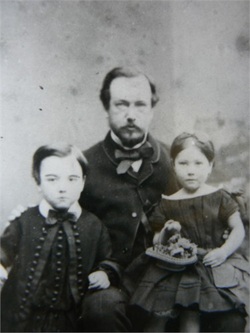 James Johnston 1856 - 1891 James Johnston 1856 - 1891 Several accounts of the events of the evening of the 9th December 1890 exist, but it is widely reported that in the late evening of the 9th, Johnston entered the room where his children slept with their nurse and quietly smothered them in their beds. The nurse was not woken until she heard a noise, later presumed to have been pistol shot, from his wife's room. Hearing a door shut and the house fall silent she returned to sleep. Waking early the next morning and trying to rouse the children the horror of what had happened became apparent. Rushing to the room of her mistress she discovered Mrs Johnston on the floor in a bloodied state, her arms covered in lacerations and having received a shot to the head. James was later discovered shivering and unconscious in a spare bedroom have allegedly tried to take his own life with poison. James and his wife were rushed to hospital, but the latter died a week later. The bullet was lodged too deep in her brain to be operable. Speculation abounded, was this a cruel premeditated murder by a man in financial difficulty saving his family from disgrace?, or the actions of a man rendered insane as a result of the head injuries he sustained many years previous? As is true to this day, once the press had hold of the story all manner of theories and reports were published, making it impossible to separate fact from fiction. One newspaper even reported that James had died in hospital without regaining consciousness! The nurse Katie Hicks, later told of Mr Johnston's mood swings that accompanied his severe headaches which at times left incapable of speech. Surely this would have been picked up by the medical examiners at his trial? Apparently not! He was tried and sentenced to death by hanging, the sentence to be carried out on the 11th May 1891. A last minute reprieve was received from Johnston's supporters to allow for a full medical examination to determine his mental condition. No evidence of insanity being found, James met his untimely death a week later on the 18th May 1891 at Ballarat Gaol. Even this caused much controversy and angst amongst the prison staff. As James was unable to walk how were they to get him to the scaffold? The warders flatly refused and even prisoners bribed with a reprieve would not play any part in assisting the executioner in his grisly task. He was eventually wheeled to the scaffold in an invalid chair. ConclusionWhatever the reasons or motives behind these murders, it remains a terrible tragedy with deadly consequences. Even today mental illness remains a largely misunderstood and 'taboo' subject. Hopefully James would have received the medical treatment that his mental condition warranted, and not as one family member is rumoured to have reported, been administered mercury for his headaches. As to the press, what can be said. The same is as true today as it was then! One statement that I find most annoying and is quoted all over the internet is that James Johnston, Assistant Gold Commissioner (father of the above) was the nephew of George Johnston who helped arrest and depose Governor (Captain) Bligh. This simply is not true, he was no relation at all. With a father of such standing there would be no need to invent a family connection such as this. I can only conclude that this notion was conceived long after his death! LinksRobert Hogarth of Carfraehttp://www.bordersancestry.co.uk/blog/a-place-a-philosopher-the-potato-a-private-printers-painters-publishing-the-pacific-a-pirate-part-ii
Accounts from a few newspapers http://trove.nla.gov.au/ndp/del/article/26767592 http://paperspast.natlib.govt.nz/cgi-bin/paperspast?a=d&d=EP18910328.2.67 http://paperspast.natlib.govt.nz/cgi-bin/paperspast?a=d&d=NZH18910528.2.51 More about Lt Col James Johnston KTS and his home Mount Lodge, Portobello http://www.kosmoid.net/portobello/mountlodge
1 Comment
IntroductionThis months blog post had a somewhat unusual start to life. In some ways it happened purely by chance, on the other hand it has always been there, lurking in the wings, waiting to be told. It began whilst on holiday in Rome, where on the 3rd June I happened upon the Anglican church of "All Saints" in the Via Babuino , close to the foot of the Spanish Steps. On display inside to the rear of the Church were the flags of the Allied Nations that liberated Rome on the 4th June 1944, accompanied by two commemorative plaques from the grateful citizens of Rome. It was here that a service of Thanksgiving was held on the June the 5th 1944. BBC Archive recording from Rome on 5th June 1944. My interest was grabbed and my mind drifted back to another event that took place the previous year, September 1943 in the South of Italy at Salerno. Knowing Major Stephen B Hewitt had been made an Honorary Citizen of the town in March 1944 I was now determined to find out why. Grasping the nettle and speaking no Italian, I boldly made a request of the Hotel Cavalieri guest relations. The lovely Serena was more than helpful and by the end of the following day I was in touch with the Salerno Archives and was in possession of the document conferring the honour - in Italian! Not to worry a quick run through an on-line translation programme, although far from perfect, gives the general gist:- "Deliberation n . 144 Of 3.17.1944 the Mayor Silvio Baratta Further communication with the Salerno Archives ensued, the result - Major S B Hewitt is to be remembered as part of the "Salerno Capitale" 70th anniversary commemorations in September this year. Whilst compiling a digital biography for this purpose, I was contacted by "Who Do You Think You Are" magazine who were looking for researcher's personal research stories. Stephen's very abridged biography features in their latest newsletter which was extracted from the following:- Stephen Burgess Hewitt T.D. J.P 10.6.1913 - 10.10.1970Stephen Burgess Hewitt was born on the 10th June 1913 in Jesmond, Newcastle. He was the second and youngest son of Nathanial Naylor Hewitt a fourth generation fruit broker of the firm of Connolly Shaw Ltd, one of the founder members of the London Fruit Exchange. (As featured in April post http://www.bordersancestry.co.uk/blog/oranges-and-lemons-potatoes-pomegranates-and-melons) Stephen’s mother was Evelyn Burgess a descendent of a Birmingham Lamp Manufacturer who according to family tradition enjoyed a monopoly for ships fittings granted in the reign of Elizabeth I. Her grandfather's love of the good things in life and a disastrous copper contract with the Admiralty combined with the outbreak of the Franco Prussian War resulted in the closure of the firm. This left Evie's father Henry without the luxury of a ready made business. Making his own way, it was he who took the first steps towards establishing the Newcastle textile wholesaling firm of Roland Burgess Ltd. Stephen attended Durham School where he excelled at sport, particularly rowing. It was here that he enjoyed his first taste of the military as a sergeant major in the Officers Training Corps. On leaving School he joined the 6th Battalion Northumberland Fusiliers as 2nd Lieutenant and was transferred to the Royal Tank Regiment on the 1st November 1938. He was finally mobilised on 25th July 1940 to the Middle East with the 7th Armoured Division. From here he writes to his brother on 25th February 1942. But it was to be the events that unfolded after the Allied landings in Salerno, Southern Italy in September 1943 that would prove to be the most influential in some many lives, including his own. As Town Major he writes in December 1943:- “I am still very busy, no job is outside my scope, at the moment my area covers about 80 square miles, with many towns and villages. I am really responsible for housing all the troops in such places, in addition here I have collected two clubs an Officers Leave and Transit Camp, a Town Guard Room and a civilian housing committee which has had to house about 35,000 people. I have also managed to get started a Civilian Transit Camp because it was quite common for me to have a family of 20 just come and squat in my Office at about 9 O’clock at night, so that I organised that one to save myself some bother .” He continues in the same letter:- “I may add most of these are not my job but people are so slow at seeing the need for certain things and then so slow in getting something going, that I find I am diving into it. Good old Nosey Parker.” On the 17th March 1944 he was made an Honorary Citizen of the City of Salerno, then temporary Capital of Italy, for his work in restoring a degree of normality to civilians whose lives had been severely disrupted by war. It is for this gratitude of the people that he will be remembered as part of the 70th Anniversary of “Salerno Capitale” commemorations. His letters illustrate his great sense of humour in the face of such an enormous task. On one occasion during a brief period of leave, he finds himself stemming the tide of a burst pipe in his rented villa with a mop and bucket. Another example from a letter dated April 1945 whilst in Rome for four days.. There are many more along similar lines: - whilst in Salerno he adopts a dog which proceeds to eat his chair, has a ‘run in’ with a Nun expecting miracles, his batman breaks his fishing rod and in 1945 he is still waiting for his golf clubs to arrive from Cairo! Post war, Stephen returned to the UK and to the firm of Connolly Shaw Ltd. He never married and died at his home Wreighburn House in Thropton, Northumberland on 10th October 1970 aged just 57. He was survived by his brother Richard Naylor Hewitt MBE, his sister Kitty Hindmarsh and five nieces and a nephew. One such niece would subsequently marry the nephew of another Army Officer with an equally interesting story to tell. Brigadier Leonard Gilbert C.I.E, M.C.Leonard Gilbert was born March 1889 in Farnsfield, Southwell, Nottinghamshire to parents Benjamin Gilbert, a tailor by profession and his wife Maria Caunt. In 1911 Leonard was a student at Mapperley Hall Teacher Training College. A bit more digging and he appears in 1912/1913 as an Assistant Master at the Dukes School in Alnwick, Northumberland, when and where I am sure, he met his future wife Reniera Davison, a native of the town. With the outbreak of War Len enlisted with the 13th Notts & Derybshire Regiment or the "Sherwood Foresters" as they subsequently became known. By the time of the landings at Cape Helles, Gallipoli on 26th May 1915 he was also a temporary Major in the 1st Battalion Inniskilling Fusiliers. After the War had ended, Len returned home and was married by his brother the Rev Thomas Gilbert, to Reniera Davison at St Michaels Parish Church, Alnwick in January 1919. In the 1920's Honour List he was awarded the Military Cross. What on earth for. Further investigation and with the help of Forces War Records I uncovered the following:- "Gazette Issue 31759. M.C. Awarded the Military Cross. His Majesty the King has been graciously pleased to approve of the undermentioned rewards in recognition of gallant conduct and determination displayed in escaping or attempting to escape from captivity, which services have been brought to notice in accordance with the terms of Army Order 193 of 1919. To date 5th May, 1919." So where and when was he captured?, a further record on Forces War Records shows that a Lt Col L Gilbert, 10th Brigade of the Sherwood Forester's was captured on the 23rd April 1917 and repatriated on the 18th Dec 1918. Unfortunately the record does not give a location, but tracing the actions in which the 10th Sherwood Foresters were engaged, it would appear most likely it was at the second Battle of the Scarpe, Arras, France on the Western Front. Alas as the International Red Cross POW archives are closed due to digitisation until 4th of August it is impossible to be certain. Although conditions in the Officers POW camps were less harsh than those endured by the troops, the officers themselves were not exempt from punishment. Conditions in troop "Reprisal Camps" following an escape were so harsh that many died. Reprisal camps for officers existed too. The fortress of Ingolstadt was temporary home to amongst others Charles de Gaulle and Roland Garros. Until the ICRC website goes live in August I can only speculate on Lens fate. IndiaMilitary life obviously suited Len, from his medal card information we can see that he is, by 1920 stationed at Napier Barracks, Sialkot, India. In 1924 his wife Reniera sailed from England to Karachi to join him. On the 18th December 1928 their son John Dethick Gilbert was born at Multan, West Bengal. During this period he rose steadily up the ladder of seniority. On the 10th of July 1940 Len's rank rose to that of Temporary Brigadier and in 1943 as Commandant of the Army Training School in Bangalore he was made a "Companion of the Most Eminent Order of the Indian Empire", or C.I.E. In the same year he retired from the Indian Army and negotiations commenced for a most unusual post, that of Chief of Staff to HEH the 7th Nizam's Regular Forces. 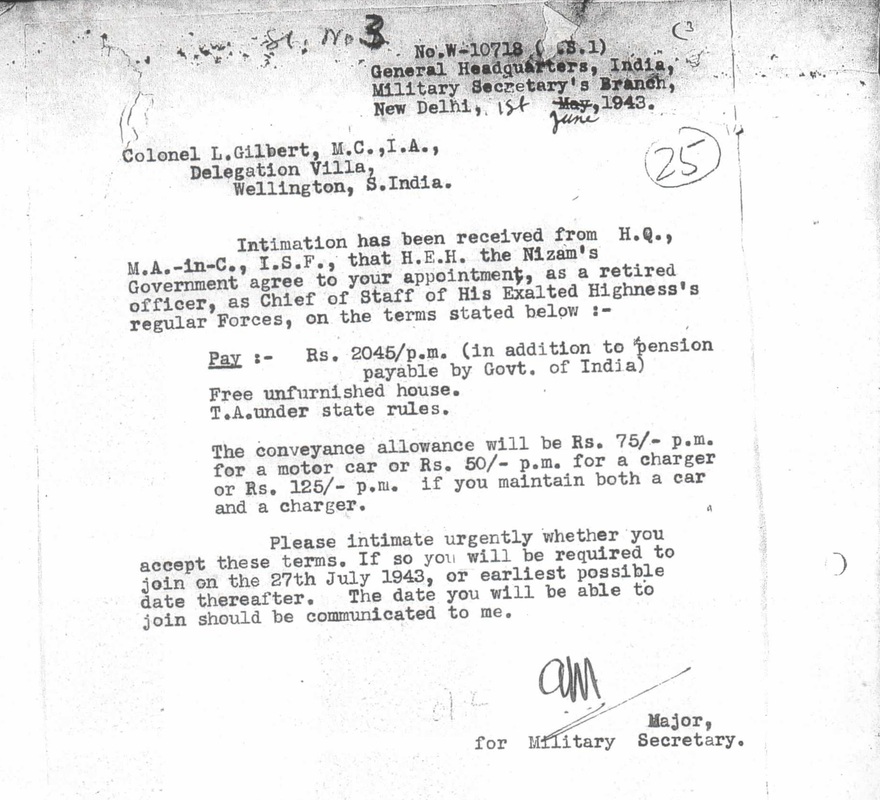 Terms and Rates of Pay 2045 Rupees per month in addition to pension payable by Govt. of India. Free Unfurnished House. 75 Rupees per month for a motor car 50 Rupees per month for a charger or 125 Rupees a month if you maintain both a car and a charger. The 7th and Last Ruling NizamThe 7th Nizam of Hyderabad Mir Osman Ali Khan Siddiqi Bahadur acceeded to title in 1911 on the death of his father. As Nizam he was absolute ruler of the largest princely state of Hyderabad in pre-independent India, some 86,000 square miles. Not only was he reputedly the richest man in the world he was also one of the most eccentric. he was quoted by Iris Portal wife of British Politician Rab Butler and who had been in Hyderabad in the 1930's as being "Mad as a coot". Iris had befriended one of the Nizam's daughters in law, who had once shown her the vaults beneath a royal palace, where dozens of trucks lay parked up in various stages of decay but still full of gold, silver and precious gemstones. The Nizam had at one time feared revolution and had made plans for the removal of a proportion of his portable wealth. Plans that were subsequently abandoned. 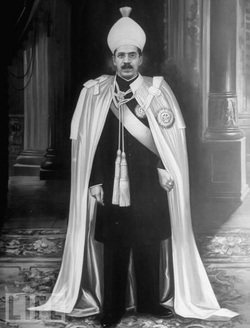 The Nizam spent his entire life at the King Kothi palace, where he employed a huge household staff numbering in the region of 6,000 with 38 employed purely to clean and dust the chandeliers! On the flip side he is said to have worn crumpled pyjamas, the same fez for 35 years, smoked cigarette butts and to have eaten his meals from a tin plate. The Hyderabad Government minted it's own currency, the Hyderabadi rupee from 1918 and in 1941 the Nizam formed his own bank - the Hyderbad State Bank. In 1941 the Nizam made a gift of a diamond tiara and necklace to the then Princess Elizabeth on the occasion of her marriage. Known as the Nizam of Hyderabad Necklace it is still worn by royals to this day. 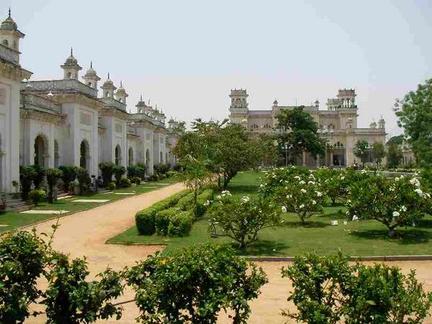 With enough pearls to pave Piccadilly Circus and a stable of horses that Godolphin can only dream about the Nizam also had an insatiable appetite for sex. He had countless wives, over 86 mistresses and fathered over 100 illegitimate children. He also had one of the largest collections of porn in the world, using hidden cameras in his zenana and guest quarters! However this was not to last. Following Indian independence from Britain in July 1947 and the susequent division of India and Pakistan, the Nizam stood firm and declared Hyderabad an independent state. Following "Operation Polo" the state finally succumbed to the Indian Army in September 1948, when the monarchy was disbanded and Mir Osman Ali Khan found himself Nizam in name only. The 7th Nizam died in February 1967, and the title passed to his grandson Mukarram Jah whom he had nominated as his heir. He inherited his grandfathers immense wealth, but several divorces and litigation by several thousand rival descendants of various Nizams, all claiming a piece of his inheritance, rapidly depleted his reserves. From the beginning he was forced to sell jewels and heirlooms to stay solvent and by the 1990's he had been stripped of the majority of his ancestral assets. In 1973 disgusted by the family in fighting he had removed himself to a sheep station in Perth Australia, where he spent his days driving bulldozers. In his absence the royal palaces were looted and the remainder of his possessions dispersed by unscrupulous advisers. Jacob or Victoria?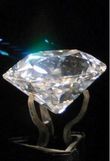 Included amongst the Nizams vast collection of gemstones was a diamond, reputedly 185 carats in its uncut state that sat wrapped in newspaper on the desk of the 7th Nizam and was used as a paperweight. Also known as the "Imperial" or "Great White" it was the largest diamond in the world until 1896 and had been bought by the 6th Nizam as a portent of goodluck and who named it the "Victoria" It was found by the next incumbent in the toe of one of his father's shoes. During the many bitter inter family financial disputes that would plague the 7th Nizam's later life, and indeed that of his successor, various pieces of jewellery and gems came up for sale in 1951. Amongst these was the "Jacob" for which the Indian Government refused permission, given the gem's national importance. Five years later, again the diamond was reputedly for sale, and again the Indian Government intervened. It was not until after the 7th Nizam's death in 1967 and protracted legal wrangling's that the Nizam's jewel collection was eventually bought by the Indian Government in 1995 for $70 million. To date there has been no further mention of the "Victoria", the "Imperial" or the "Great White" Is the "Jacob" in fact the one and the same diamond that once graced the 7th Zizam's desk wrapped in newspaper? ConclusionWhilst the Nizam's sorry tale of riches to rags in less than 30 years was not a direct result of war, it serves as a timely reminder of the cataclysmic effects that revolution can cause to an individual as well as a country.
More important than the material are the long lasting psychological effects of war. Not only for those who fought and survived, but those who survived so seriously maimed they were unable to provide for their families, those who were unable to fight and the inexplicable guilt they felt at not being able to do so, and of men too young to go to war who lost their youth replacing their fathers in the fight for survival at home. A poignant fact to end on . In a report issued by the United Nations on 20th June this year it is stated that "the number of refugees, asylum seekers and internally displaced people worldwide has, for the first time in the post World War II era, exceeded 50 million people" |
AuthorSusie Douglas Archives
August 2022
Categories |
Copyright © 2013 Borders Ancestry
Borders Ancestry is registered with the Information Commissioner's Office No ZA226102 https://ico.org.uk. Read our Privacy Policy

